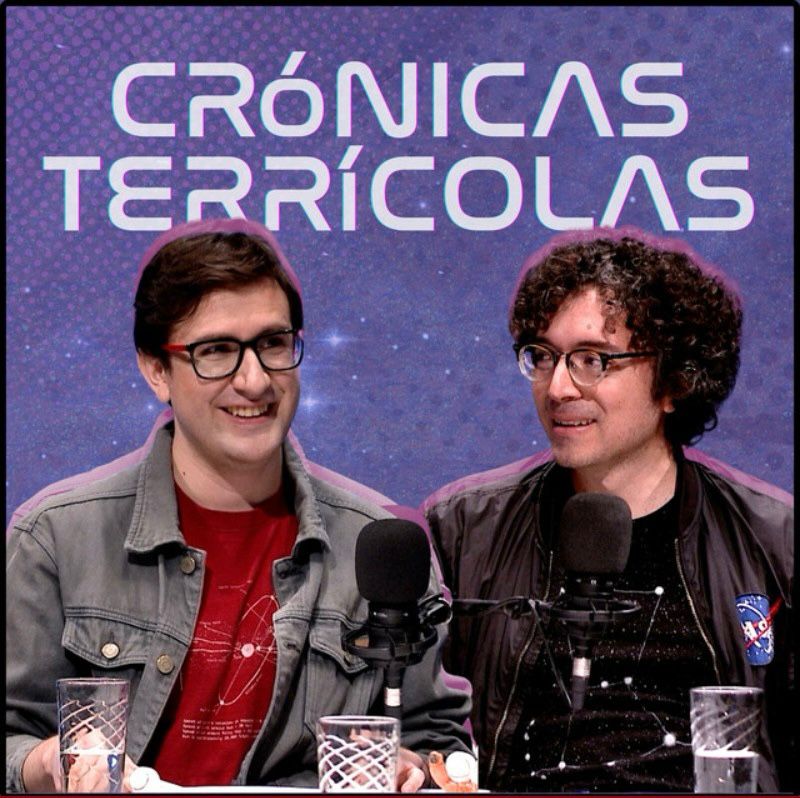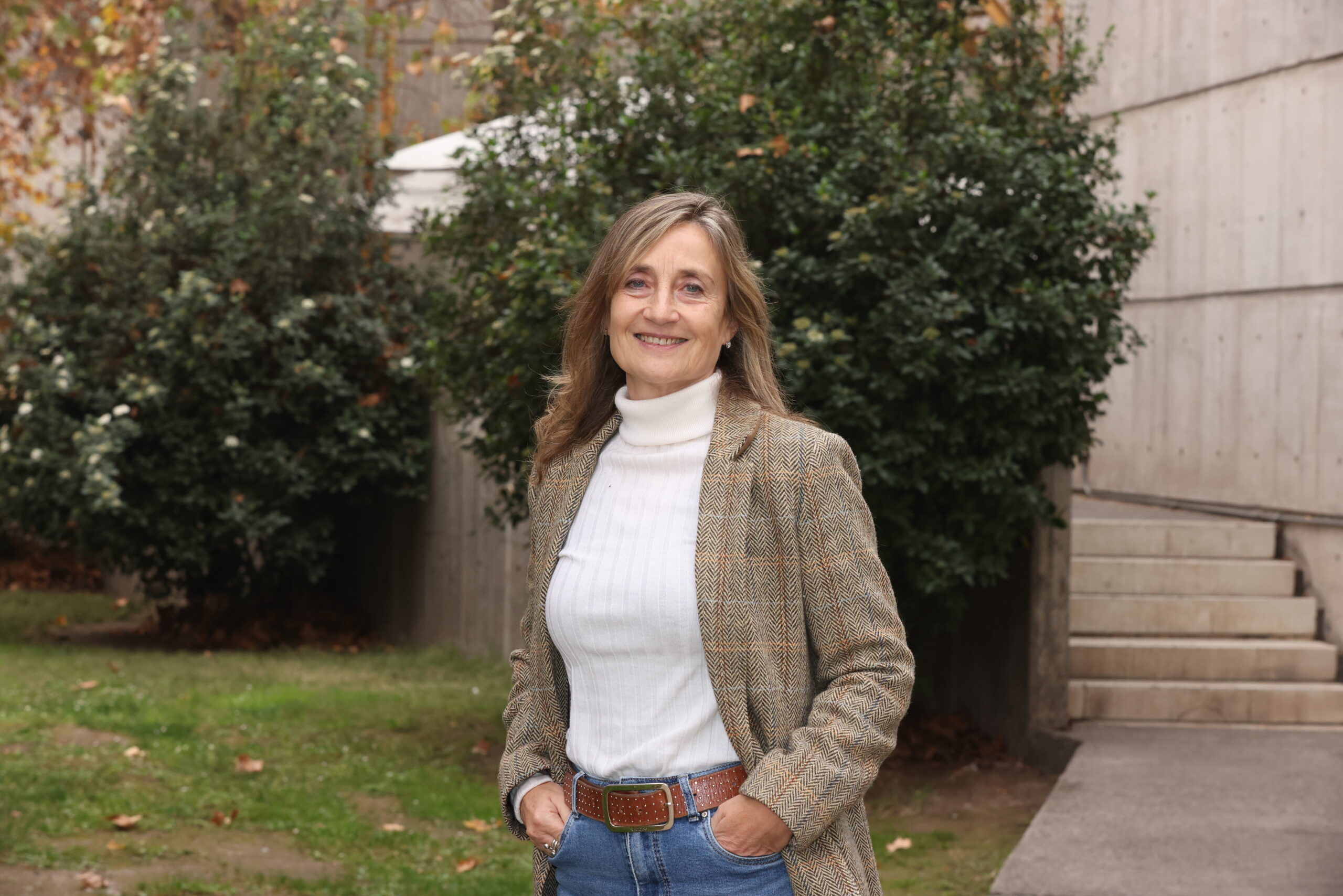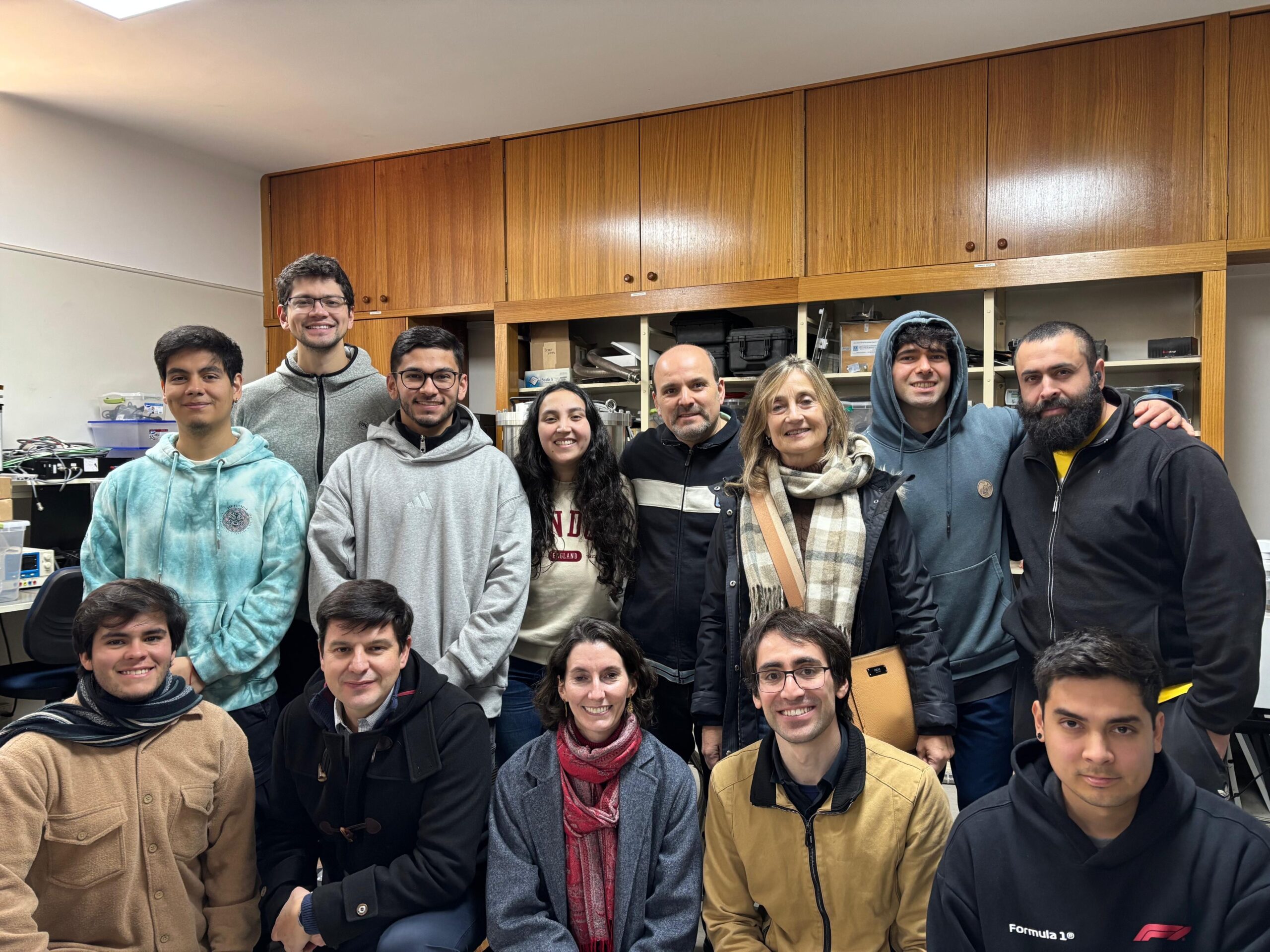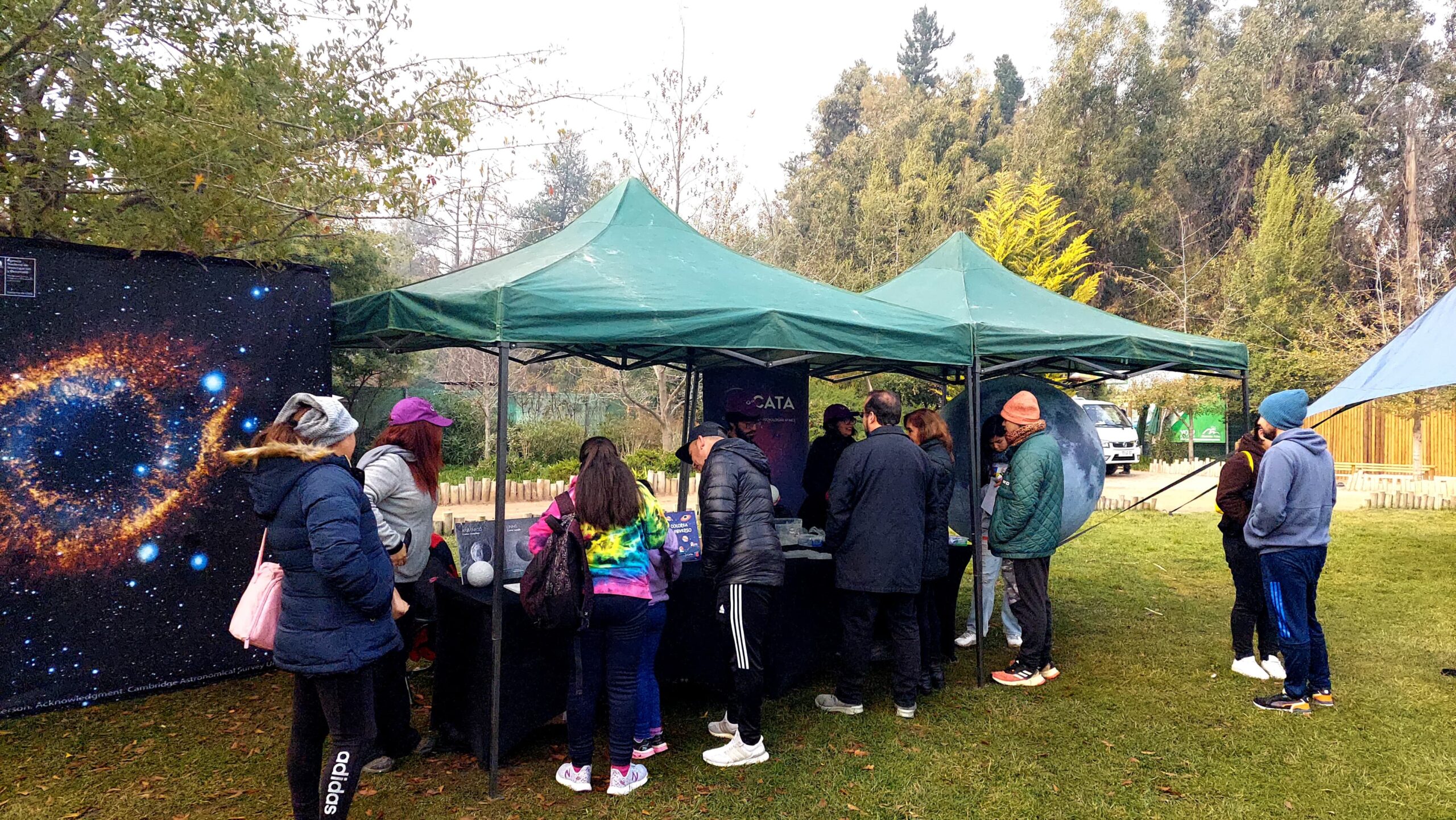
CATA researchers awarded Fondecyt 2025 funds
Seven researchers from the Center for Astrophysics and Related Technologies (CATA) were awarded Regular Fondecyt funds thanks to the 2025 call for proposals by the National Agency for Research and Development (ANID), which will allow them to study and carry out scientific or technological research leading to new knowledge or applications. In addition, a researcher associated with the Center has also been awarded Initiation Fondecyt funds.
The Center for Astrophysics and Related Technologies (CATA) continues to consolidate in scientific and astronomical research. In this line, it was announced the awarding of Regular Fondecyt funds for different research projects, where seven researchers from our Center were awarded funds to develop their lines of work.
These projects, funded by ANID, seek to promote scientific-technological research in various areas of knowledge, by financing individual research projects of excellence oriented to the production of knowledge. The Fondecyt de Iniciación (Initiation Fondecyt), with the same approach, applies the promotion of new researchers, through the financing of research projects of 2 to 3 years of duration.
The CATA principal and associate researchers who were awarded these funds are: Antonela Monachesi and Facundo Gómez both from Universidad de La Serena; Marcos Díaz, from Universidad de Chile; Gijs Mulders, from Universidad Adolfo Ibáñez; Leo Vanzi and Ezequiel Treister both from Universidad Católica; Manuel Aravena, from Universidad Diego Portales and Rodrigo Herrera-Camus, from Universidad de Concepción, who was awarded a Initiation Fondecyt.
Research projects
One of our Associate Researchers, Facundo Gómez, associate researcher of the center and academic of the Universidad de La Serena, will develop his work “Scars of Evolution: Unveiling galactic histories through morphological perturbations and ongoing activity”, which aims to identify and characterize the key physical processes that shape the properties of galaxies in different contexts, times and scales, using state-of-the-art cosmological simulations and advanced observational data. It will also investigate how the dense environment of galaxy clusters affects star formation rates in high redshift regions, integrating observational data and cosmological simulations.
“This work seeks to broaden the understanding of the processes that shape galaxies, providing new insights into their evolution and formation based on both their global parameters and morphological perturbations, as well as to deepen the impact of interactions in particularly dense environments in the universe, improving theoretical models of galactic evolution,” said the astronomer.
On the other hand, Manuel Aravena, associate researcher and professor at the Universidad Diego Portales, has titled his project “Origins of Ionized Carbon Halos in Distant Systems”.In this work, the focus of research is to respond to one of the phenomena discovered in recent years in the study of formation and evolution of galaxies in the early universe, which corresponds to the existence of ionized carbon gas in large areas. This study will allow us to understand how the interstellar medium is related to the circumgalactic medium of galaxies (corresponding to a cloud of gas and dust that surrounds galaxies), and how carbon, a critical element for life on Earth, has been reprocessed through cosmic time.
In parallel, another awarded research is “A platform to sustain and study extreme-life in space with CubeSats”, led by Marcos Díaz, Associate Researcher at the Center and academic at the University of Chile.This work proposes to consolidate the development of a hardware and software platform to continuously study the growth of extremophiles in space, as well as to develop systems that allow the study of extremophilic microorganisms with fully active metabolic machinery or that allow the reactivation of dehydrated samples in space.
This platform will not only include sensors to monitor microorganisms, but also sensors for key environmental variables such as temperature, radiation, etc. The study plans to support the search for life in the vicinity of the solar system. As well as monitoring extreme microbial life that could be found on other celestial bodies and studying the signs they may leave behind or the probabilities of reactivation are key to the remote search through astronomy.
On the other hand, Antonela Monachesi, Principal Researcher at CATA and professor at Universidad La Serena, will work on her project “Relics of structure formation: from dwarf galaxies to the outskirts of galaxy clusters”, which seeks to understand how galaxies grow and evolve over cosmic time, using the Λ-Cold Dark Matter Cosmological Model (LCDM), which suggests that large structures in the universe form hierarchically, accumulating smaller systems, and more massive structures, such as galaxy clusters, continue to assemble, while dwarf galaxies form at earlier stages.
This research seeks to provide a deeper understanding of galaxy formation and evolution, comparing the results with advanced cosmological simulations, which is crucial to interpret the data and provide a physical meaning to the observational results obtained. In this way, it aims to provide more knowledge about galaxy formation and evolution, as well as to build a more complete picture of how galaxies assemble over cosmic time. So that the results can be used in educational and science outreach programs, helping to increase public interest and understanding of astronomy and the universe.
Another research associate who was awarded a grant was Gijs Mulders, Research Associate and academic at the Universidad Adolfo Ibáñez, who will seek to identify where water worlds could be hiding among the known exoplanets through his research entitled “Water Worlds: Formation and Composition of Transiting Exoplanets”, this taking advantage of the wealth of observational data on transiting exoplanets and spatially resolved protoplanetary disks in the ALMA millimeter, combining them with numerical models of planet formation through pebble accretion.
This study promises to bring more answers to the question “Are we alone in the universe?” through the study of exoplanets. In turn, Mulders’ work is designed to learn how a critical ingredient for life – water – is distributed among exoplanets, and to learn how many planets suitable for life might exist.
Ezequiel Treister, Principal Investigator, director of CATA and academic at the Universidad Católica, will work on his project entitled “A comprehensive view of the connection between the growth of supermassive black holes and large galaxy mergers”, which consists of three stages: First, observations of the highest sharpness and sensitivity will be combined using the ALMA radio telescope array with space-based X-ray telescopes to complete the census of the local population of growing supermassive black holes in the late stages of the merger of two or more massive galaxies.
Subsequently, multi-wavelength observations at high spatial resolutions focused in the 5 to 200 GHz range using the ALMA, VLBA and VLA radio telescopes will be used to confirm the physical nature of the nuclear emission in these systems. Finally, they will use the large optical and infrared mappings carried out using the Vera Rubin and Euclid observatories respectively to obtain robust observational constraints for the cosmic evolution of the merger-triggered growing supermassive black hole ensemble.
The objective of this research is to obtain the most complete vision of supermassive black holes and begin to answer questions about the growth and evolution of galaxies, the population of the largest black holes that we know of in the Universe and the connection between both phenomena. It should be noted that a significant number of astronomy undergraduate and graduate students and young researchers will participate in this work, thus contributing to the formation of advanced human capital in the country and to the consolidation of Chile as a world leader and reference in this area.
Finally, the seventh Fondecyt project “Boosting the role of Small Telescopes in the era of giants” has as its author Leonardo Vanzi, Associate Researcher at CATA, as well as academic at the Universidad Católica.This research seeks to enhance the role of small telescopes and the scientific synergy they have with larger projects operating from the ground and in space. In order to develop new instrumentation, control and software tools, putting Chile’s telescopes in relevance.
Initation Fondecyt
Rodrigo Herrera-Camus, associate researcher at CATA and academic at Universidad de Concepción, will develop his project “A study of gas, dust and stars in star-forming galaxies at the end of the reionization era”,with the goal of understanding the evolution of the gas, dust and star content in star-forming galaxies when the Universe was approximately one billion years old. To do so, he will use data from the Atacama Large Millimeter/submillimeter Array (ALMA) and the James Webb Space Telescope (JWST), which have provided unprecedented observations of these distant galaxies. Through spectral modeling and emission line analysis, the researcher will study the properties of cosmic dust, the composition of the interstellar medium and the relationship between metallicity and star formation in these primordial systems.
In addition, his research will explore the connection between galactic kinematics and metal distribution in order to better understand the physical processes that influenced the formation of the first galaxies. To do so, he will analyze gas dynamics on sub-kiloparsec scales and compare his results with evolutionary models, which will allow us to identify the key mechanisms in dust production and metal mixing in the early Universe. This work will not only provide new information on the evolution of galaxies in their early stages, but will also contribute to the training of graduate students and the creation of a public database with processed information from ALMA, JWST and the Hubble Space Telescope, facilitating access to these data for the scientific community.
Recent news
-
 Publicado el: 18/07/2025New program between CATA and Media UC to explore the mysteries of the Universe with great guests
Publicado el: 18/07/2025New program between CATA and Media UC to explore the mysteries of the Universe with great guests -
 Publicado el: 09/07/2025Patricia Tissera is recognized as full professor by the Pontificia Universidad Católica de Chile
Publicado el: 09/07/2025Patricia Tissera is recognized as full professor by the Pontificia Universidad Católica de Chile -
 Publicado el: 04/07/2025CATA researchers among the best in Chile according to international ranking Research.com
Publicado el: 04/07/2025CATA researchers among the best in Chile according to international ranking Research.com -
 Publicado el: 30/06/2025CATA Director strengthens ties in her second institutional tour
Publicado el: 30/06/2025CATA Director strengthens ties in her second institutional tour -
 Publicado el: 30/06/2025CATA celebrated Asteroid Day 2025 at the Pueblito de Las Vizcachas Park
Publicado el: 30/06/2025CATA celebrated Asteroid Day 2025 at the Pueblito de Las Vizcachas Park
Categories list
- Acknowledgments 20
- Astrobiology 5
- AstroCluster 1
- Black holes 13
- Corporativo 50
- Cosmology 4
- Descubrimientos 19
- Disclosure 47
- Exoplanets 13
- Extension 4
- Galaxies 17
- Galaxies formation 2
- Inter y Transdisciplina 2
- Local Universe 13
- Publications 5
- Sin categorizar 31
- Solar System 11
- Stellar formation 6
- Technology 9
- Technology Transfer 12